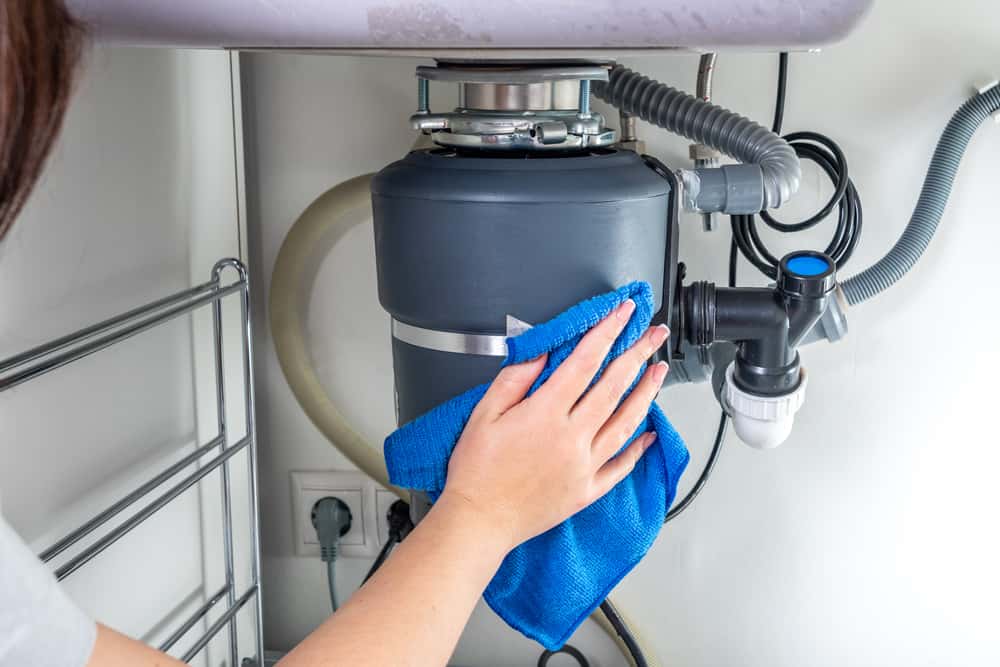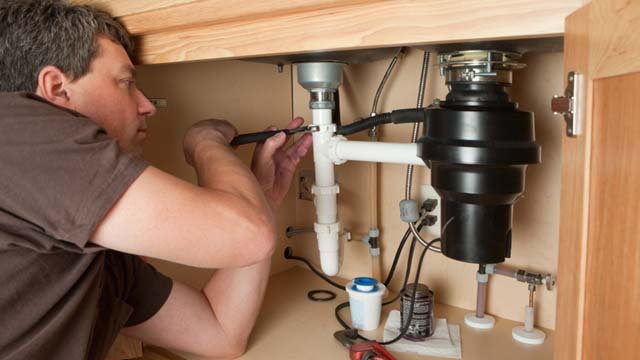An Guide to Resolving a Leak in Your Garbage Disposal
An Guide to Resolving a Leak in Your Garbage Disposal
Blog Article
The writer is making a few great observations on How to fix a pretty consistent leak from my garbage disposal overall in this content down the page.

Garbage disposals are necessary kitchen area home appliances that help in getting rid of food waste effectively. However, a leaking garbage disposal can be an irritating and untidy issue to manage. Thankfully, many leakages can be repaired conveniently with a couple of basic steps. In this short article, we will talk about just how to deal with a dripping garbage disposal effectively.
Intro
Waste disposal unit are installed under cooking area sinks and are designed to shred food waste right into smaller sized items, permitting it to travel through the plumbing system quickly. While these gadgets are normally reputable, leakages can take place gradually due to deterioration, loose links, or damage to the device.
Step-by-Step Overview to Fixing a Leaking Garbage Disposal
Switch off the Power
Before attempting any kind of fixings, make sure that the power to the waste disposal unit device is switched off to prevent the danger of electric shock.
Locate the Leak
Recognize the precise location of the leak and establish the reason
Tighten Connections
Utilize a wrench to tighten any kind of loose links between the disposal device and the plumbing system.
Replace Seals or Gaskets
If the leak is because of worn seals or gaskets, get rid of the old elements and change them with new ones.
Patching Cracks or Openings
For splits or holes in the disposal unit, use epoxy or an appropriate patching material to seal the damaged area.
Recognizing the Resource of the Leakage
Prior to trying to repair a dripping waste disposal unit, it is important to identify the source of the leak. This can generally be done through aesthetic evaluation or by conducting easy examinations.
Visual Inspection
Inspect the waste disposal unit system carefully for any type of signs of water leakage. Pay close attention to locations around seals, gaskets, and connection points.
Examining for Leaks
One means to evaluate for leakages is by running water through the disposal device and checking for any kind of noticeable indications of leak.
Common Sources Of Leakages in Trash Disposals
Worn Seals and Gaskets
Seals and gaskets play an important role in protecting against water from leaking out of the waste disposal unit. In time, these elements can degrade, leading to leaks around the disposal device.
Loose Connections
The links in between the waste disposal unit and the plumbing system can end up being loosened over time, causing water to leakage out throughout procedure.
Fractures or Openings in the Disposal Unit
Physical damage to the waste disposal unit, such as cracks or openings in the housing, can additionally result in leakages.
Devices and Materials Needed for Taking Care Of a Leaking Waste Disposal Unit
Before beginning the fixing procedure, gather the necessary tools and products, consisting of a screwdriver, adjustable wrench, plumber's putty, substitute seals or gaskets, and epoxy or patching product for repairing splits or holes.
Checking the Waste Disposal Unit After Repair
As soon as the repair work is full, examine the garbage disposal by running water with it to make certain that the leakage has actually been dealt with.
Preventive Maintenance Tips to Stay Clear Of Future Leaks
To prevent future leakages, it is necessary to perform regular upkeep on your waste disposal unit. This includes maintaining it tidy, staying clear of putting non-food products or hard things down the disposal, and periodically checking for leakages or other problems.
Final thought
To conclude, fixing a leaking waste disposal unit is a reasonably uncomplicated process that can be completed with standard devices and products. By following the steps detailed in this short article and practicing precautionary maintenance, you can keep your waste disposal unit in good working problem and avoid pricey repairs in the future.
HERE’S HOW TO FIX YOUR GARBAGE DISPOSAL
WHAT TO DO IF SOMETHING IS STUCK IN YOUR GARBAGE DISPOSAL
If the impeller won’t turn, there’s probably something stuck in the disposal. It could be a steak bone or peach pit, although plumbers report pulling all sorts of inappropriate objects out of disposals, such as bottle caps or aluminum foil. Make sure power to the disposal is off, and look inside to see if you can see the source of the jam.
Never stick your fingers in a disposal. Pull out anything you see with tongs or pliers.
If the disposal still won’t work, it may be time to call a plumber or consider buying a new disposal. GEM Plumbing & Heating is here for all of your garbage disposal needs.
WHAT TO DO IF YOUR GARBAGE DISPOSAL DRAIN IS CLOGGED
Take everything out from underneath your sink and put a bucket or other container under your disposal to catch any water that drains out. Disconnect your disposal from the power supply. If it’s plugged into a wall outlet, unplug it. If it’s hardwired into an electrical box, go to the electrical panel and turn off the breaker for the disposal. Pour ¼ cup of baking soda into the drain, followed by ½ cup of white vinegar. Give the solution a few minutes to fizz and do its work. Look into the disposal with a flashlight to see if you can see an object that might be causing the clog. If you see it, remove it using tongs or pliers. MORE TIPS ON DEALING WITH A CLOGGED GARBAGE DISPOSAL
Never use drain cleaner in a garbage disposal. It can damage the plastic parts inside the disposal. You can also be splashed with the caustic liquid while working to clear the clog. Beware! Never stick your fingers into a garbage disposal. Trust us — not a good idea. In many instances, your dishwasher drains through your garbage disposal. This allows the disposal to grind any large food particles that may be drained out of your dishwasher. There are some jurisdictions, however, where the plumbing code prohibits such a connection. WHAT TO DO WHEN YOUR DISHWASHER DRAINS THROUGH THE DISPOSAL
Run some water in the sink so your plunger has at least a ½-inch of water to create a seal and plunge vigorously up and down several times. You may need to repeat this several times. Run hot water down the drain to clear any residue that remains.

We were made aware of that write-up on Why Is through a good friend on another web address. Don't hesitate to take the time to promote this blog post if you appreciated it. Thanks a lot for going through it.
Call Today Report this page